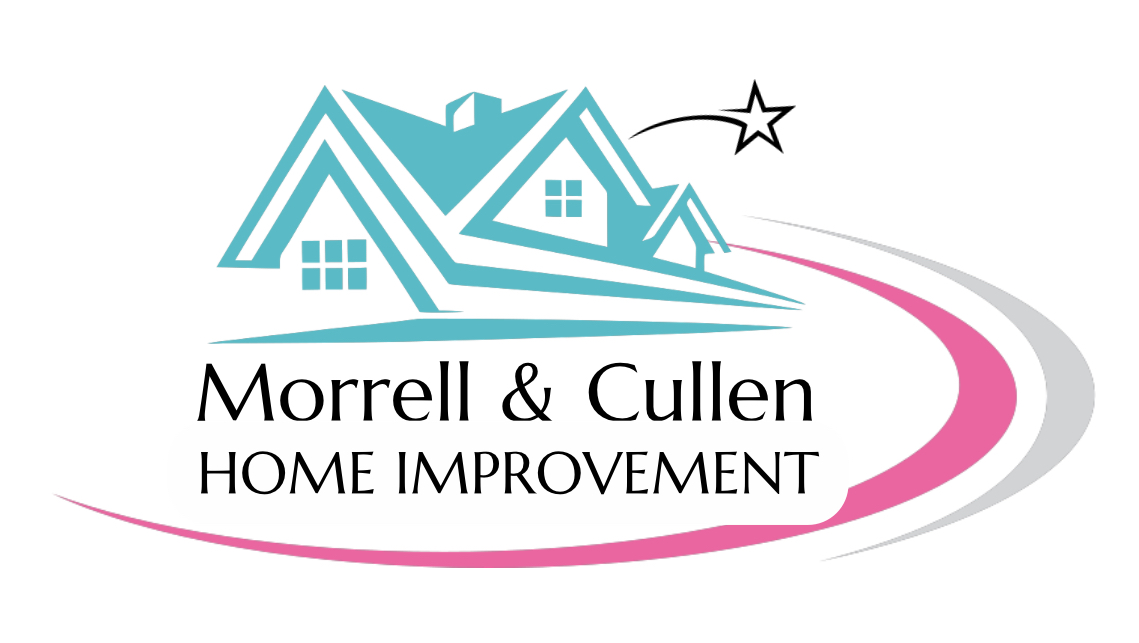Understanding R-Value
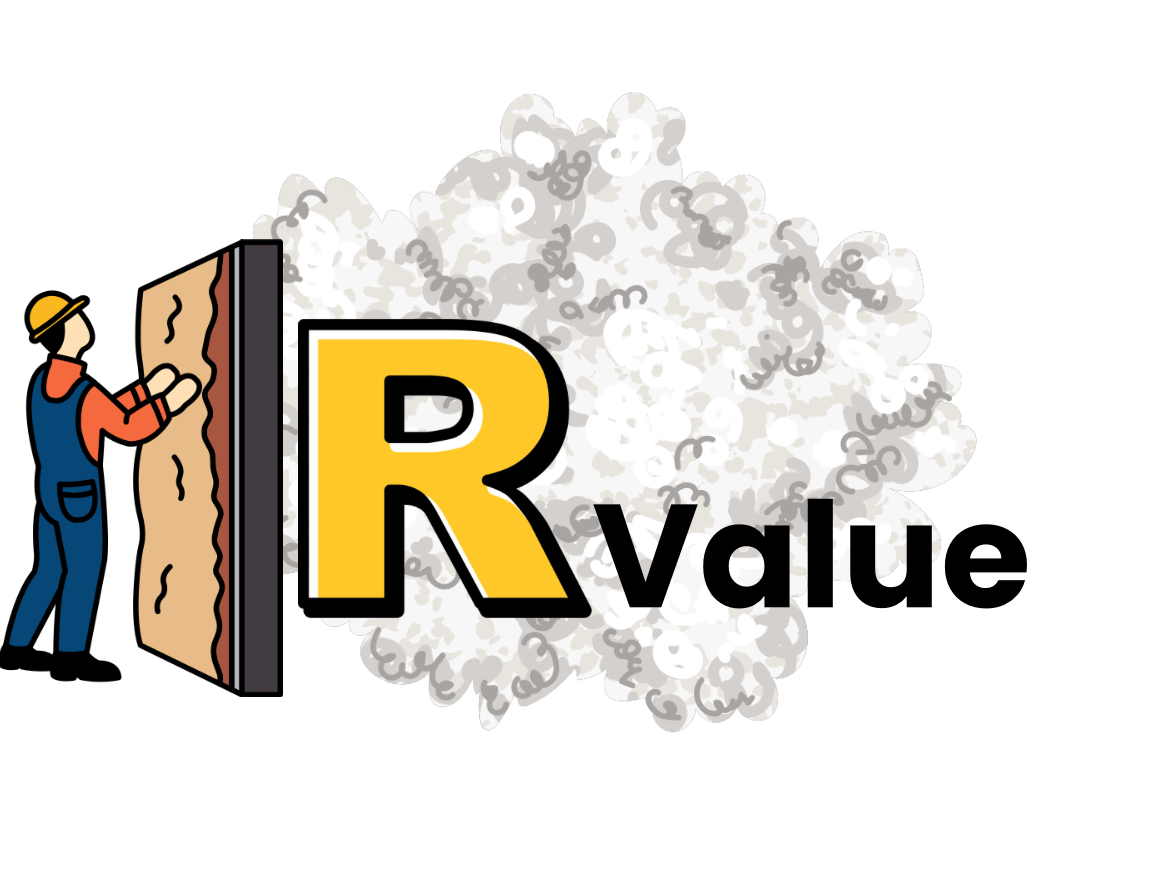
Color, style and curb appeal - these are the things homeowners focus on the most when selecting new siding for their home. After all, siding has a huge impact on your home’s overall appearance. But while aesthetics are important, they’re only one part of the equation. Functioning and performance should also be considered, as there’s an equally important factor that often gets overlooked - and that’s R-value.
What Is R-Value?
R-value is a measurement of a material’s ability to resist heat flow - or in simpler terms, how well it insulates. It’s often used to rate materials like insulation, walls, windows and siding. The higher the R-value, the better the material is at keeping warm air inside during the winter and cool air inside during the summer; increasing the overall energy-efficiency and comfort in your home.
What Does It Have to Do With Siding?
When most people think of insulation, they picture fiberglass or foam insulation that’s typically found in walls and attics. But even with barriers like these in place, air can often still escape, lowering the R-value of your home and increasing the need for additional insulation. And the easiest way to add insulation to the exterior walls of an existing house, is when new siding is being installed and the interior layers of the walls are exposed. In fact, it's nearly impossible to do otherwise without the need for additional demolition and disruptive interior work. Installing insulation during a siding replacement provides an ideal, cost-effective opportunity to allow unobstructed access to exterior wall cavities and sheathing. It’s considered a “once in a generation” opportunity that many homeowners wisely take advantage of.
But how do you know if your walls need higher R-value? Not everyone who replaces their siding, chooses to install additional insulation. So long as your home meets modern energy codes (more on that below), it’s typically up to you, the homeowner, to decide on whether you want your carpenter to opt for materials with a higher R-value. If you’re unsure, your siding installer should be more than happy to help you decide. More times than not, there are number of tall-tale signs many homeowners notice ahead of time that forewarn the presence of under-insulated walls:
Signs of Inadequate Insulation
High Energy Bills
Heating and cooling costs keep rising even though your system is working fineUncomfortable Interior Temperatures
Rooms heat up or cool down too quickly, or unevenlyDrafts or Cold Spots
Certain areas of your home feel extra cold in winter and extra warm in summer (in comparison to other parts of your home)Walls & Floors Feel Cold to the Touch
Walls with poor insulation feel cooler to the touch than walls with proper insulationFrozen Pipes & Ice Dams
Heat escapes through walls and attic, causing pipes to freeze or snow to melt and refreeze on the roofThin, Noisy Walls
Outside noise is easily heard indoors, and may even be disruptiveHomes Built Before 1990 With Original Siding
Homes built before modern energy codes often have little or no wall insulation; so if your house has never been resided, it's likely under-insulated
If you’re noticing any of the above signs of inadequate insulation in your home, you may be wondering “is it really that big of a deal?” And the answer is, maybe. If your comfort level is fine and you’re not worried about higher energy bills, you’re not required to upgrade. However, just because you may not currently feel the impact of low R-value, it’s still an aspect of your home that isn’t functioning as it should. And, as we all know, just because soemthing isn’t an issue today, doesn’t mean it won’t be tomorrow.
So, if you’re going to be replacing your siding anyway, there are a number of reasons why it’s really worth improving your insulation at the same time.
Why R-Value Matters to Homeowners
Your home's energy-efficiency depends on how well the entire exterior envelope (including siding, insulation and windows) keeps conditioned air inside and outdoor temperatures outside.
And in a place like Berkshire County, where our winters are cold and our summers are hot, increasing your home’s R-value can make a noticeable difference. It can:
- Help reduce energy costs year-round,
- Increase indoor comfort and reduce drafts,
- Support your home's overall energy-efficiency,
- Contribute toward sustainability goals or green certifications, and
- Improve resale value by offering energy-conscious upgrades
Even though R-value is a way of measuring insulation, insulation isn’t the only material that has R-value
Determining R-Value of Walls
It’s important to understand that R-value for exterior walls isn’t just one material; it’s the combined effect of everything that makes up the wall assembly. Every layer of your exterior wall - siding, insulation, sheathing and even drywall - has it’s own R-value and contributes to the overall R-value of your home. Here’s what’s typically included when calculating it:
- Interior finish drywall contributes about R-0.5
- Cavity insulation (the insulation placed between the studs like fiberglass batts, cellulose and spray foam) have R-values of around R-13 for a 2x4 wall or R-19 to R-21 for a 2x6 wall
- Wall framing material (like 2x4 or 2x6 wood studs) have an R-value of around R-1 per inch.
However, it’s important to note that because studs run through the wall, they create “thermal bridges” that lower the overall R-value compared to the insulation between them - Sheathing (like plywood or OSB sheathing) usually adds around R-0.5
- Housewrap or vapor barrier adds almost no R-value but contributes to air sealing, which improves real-world performance
- Continuous exterior insulation - if used (foam boards like polyiso, XPS or EPS) can add R-3 to R-6 per inch. (It also helps to eliminate thermal bridging from the studs in the framing).
- Siding material
standard vinyl siding: ~ R-0.6
insulated vinyl siding: R-2 to R-3.5
(*see the chart below to see how other siding materials compare in R-value)
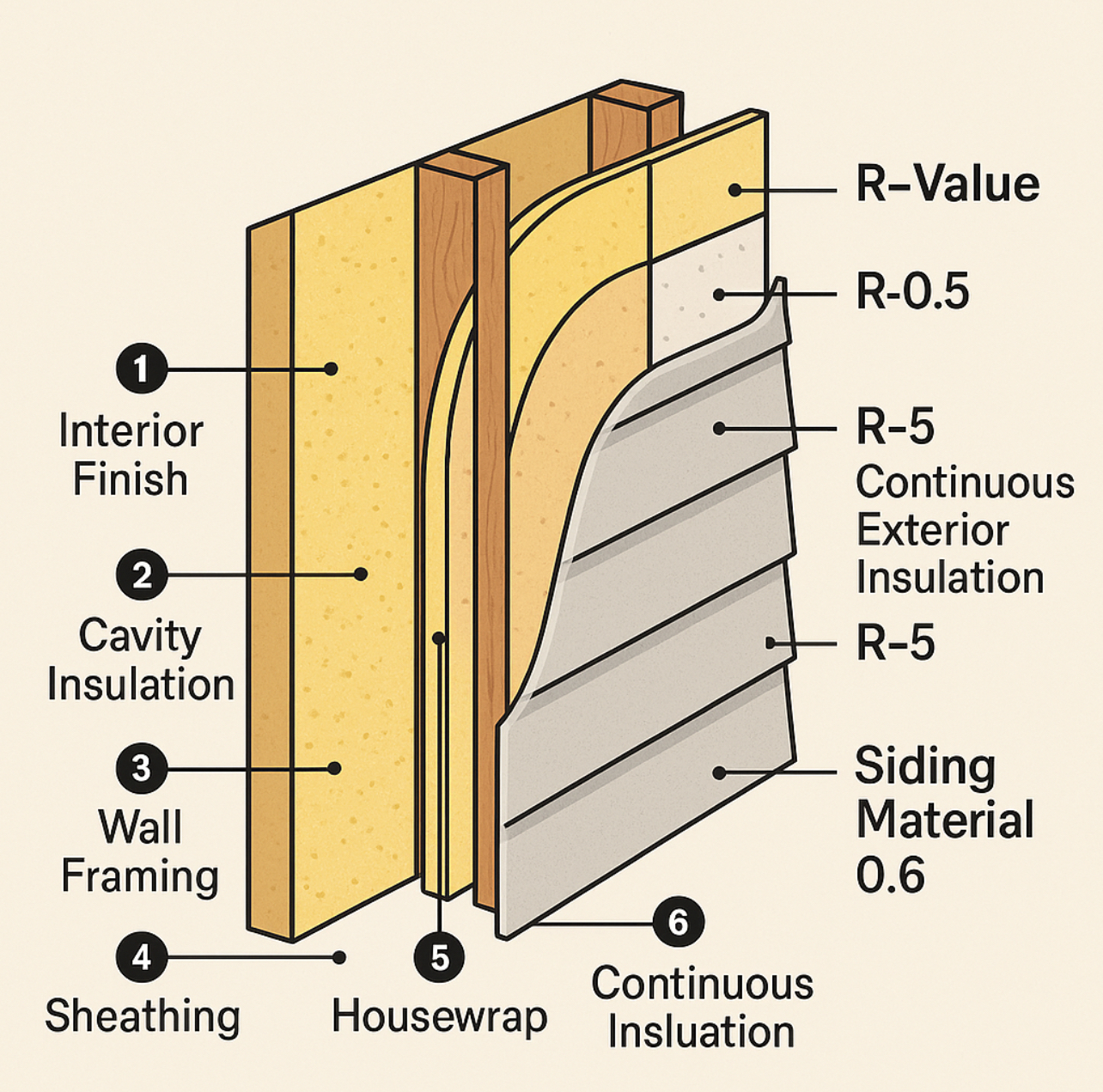
How It's Calculated
All of these layers are then added together to get the total R-value of the wall. Formula:
R-value (layer 1) +
R-value (layer 2) +
R-value (layer 3) (and so on…)
= Total R-value
Example of an older, poorly insulated residential exterior wall:
Example of a residential exterior wall with insulated vinyl siding:
2x6 wall (R-1)
+ R-19 fiberglass (R-19)
+ sheathing (R-0.5)
+ drywall (R-0.5)
+ insulated siding (R-2 to R-3.5)
Total R-Value = ~ R-23 to R-25
Once you have the total R-value of your walls, you’re ready to find out what this total
It's measured per inch of thickness, so a thicker material with a high r-value performs better than a thin material with the same rating. For example, if an insulation material has an R-factor of 2 and the thickness of the material is 1.25 inches, the R-value would be 2.5.
What's a "Good" R-Value?
Understanding what makes a good R-value depends on where it's being used and your climate zone. For exterior walls in Berkshire County (Climate Zone 5) a minimum of R-20 is required to meet energy codes - although we encourage homeowner’s to aim for at least R-25 in order to maximize energy-efficiency and provide good comfort.
Older homes may only have R-13 to R-15, which is below modern standards and worth improving when having the siding replaced.
R13 + R5 for continuous insulation
(i.e., rigid foam board)
- Below R-15: Common in older homes; energy inefficient for cold climates
- R-19 to R-25: Meets or exceeds modern building codes in most colder regions
- Above R-25: High-efficiency walls; good for new builds or major upgrades
While siding itself isn't your home's primary barrier against heat loss, adding insulation to your walls adds an extra layer of thermal protection to your home. So, if you're thinking of having your siding replaced at some point in the near future, and you begin to notice any of the above signs of inadequate insulation, it's probably the perfect time to consider increasing the R-value of your walls.
Siding with a higher r-value helps keep warm air inside during the winter and outside during the summer. Which in turn, means your heating and cooling systems don't have to work as hard, leading to reduced energy bills.
Different siding materials have different r-values, and most traditional siding materials, like wood or fiber cement, don't offer much r-value on their own - in which case, another form of insualtion is often needed.
Below are some examples of how r-value compares across common siding types and what it means for homeowners:
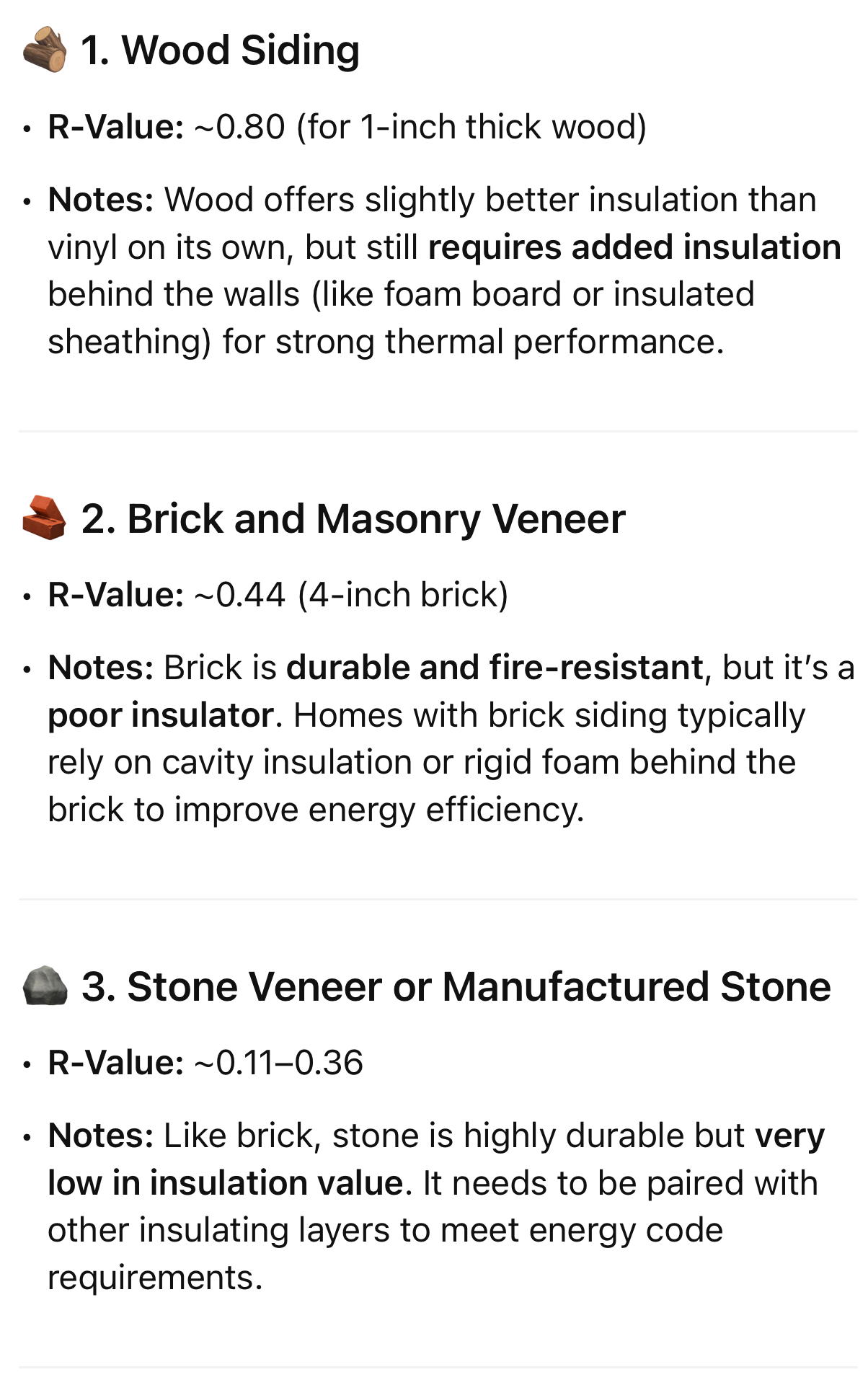
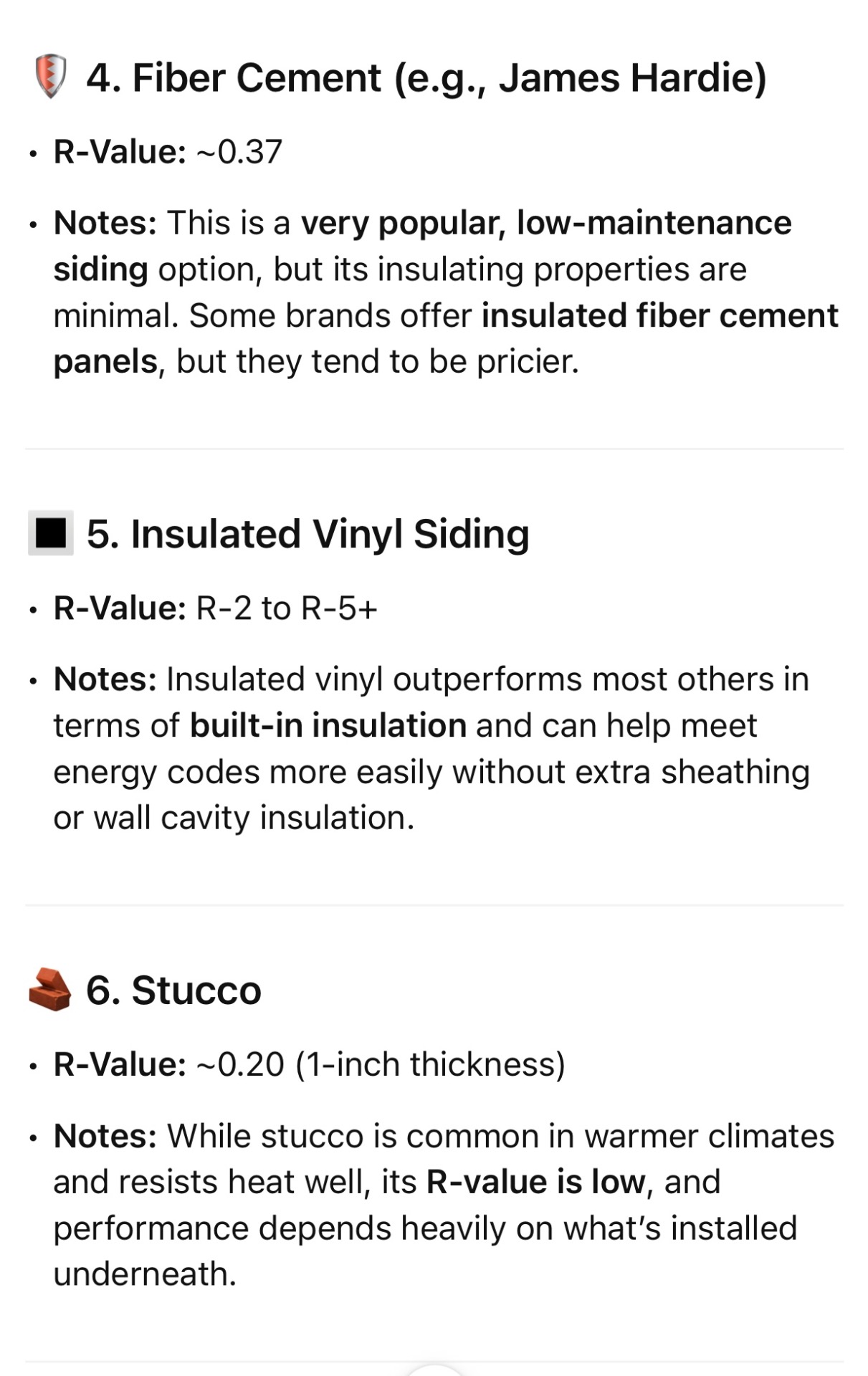
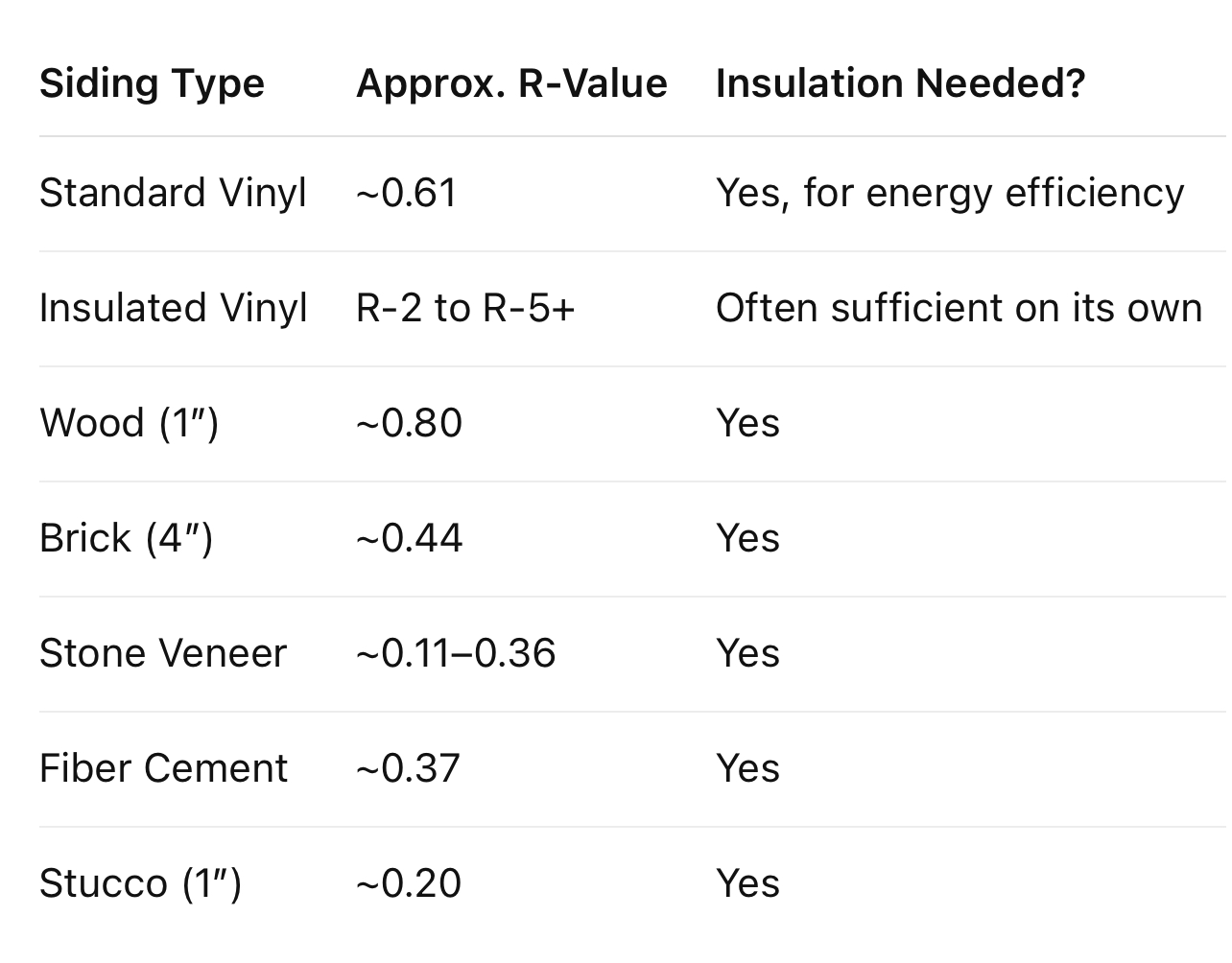
Very few siding materials provide sufficient insulation by themselves.
Why Cavity Insulation Alone Isn’t Enough
Cavity insulation, like fiberglass batts, doesn’t stop thermal bridging through studs. Continuous exterior insulation, like foam board, is important because it wraps the whole wall and improves performance significantly.
How Does Vinyl Siding Contribute to R-Value?
Standard vinyl siding on its own has a relatively low R-value. However, insulated vinyl siding—which includes a layer of rigid foam insulation bonded to the back of each panel—can significantly improve a wall's overall R-value. Some premium insulated siding products can add up to R-2 to R-3.5 to your wall system, depending on the brand and thickness.
Balancing Performance & Aesthetics
When selecting vinyl siding, it’s important to find a balance between looks and energy performance. Most professional siding installers will provide you with options to achieve both durable, attractive finishes and added insulation for better efficiency. And while R-value may not be the first thing you think of when picking new vinyl siding, it’s a factor that can make a noticeable difference in your comfort and energy savings for years to come.
